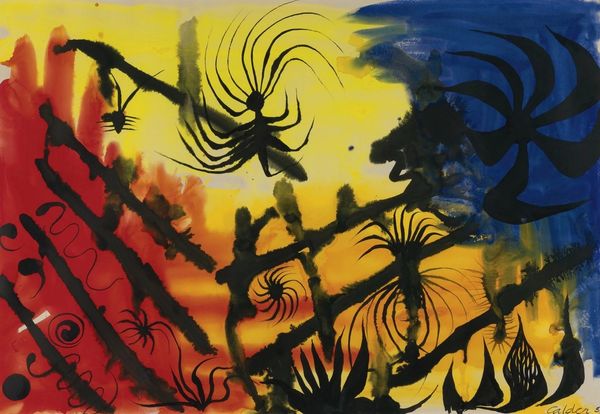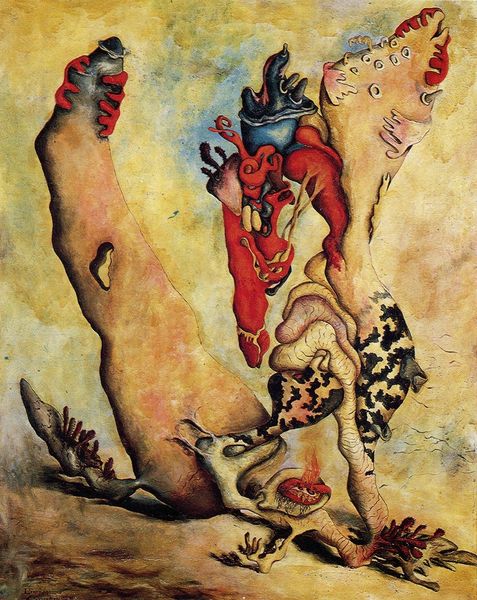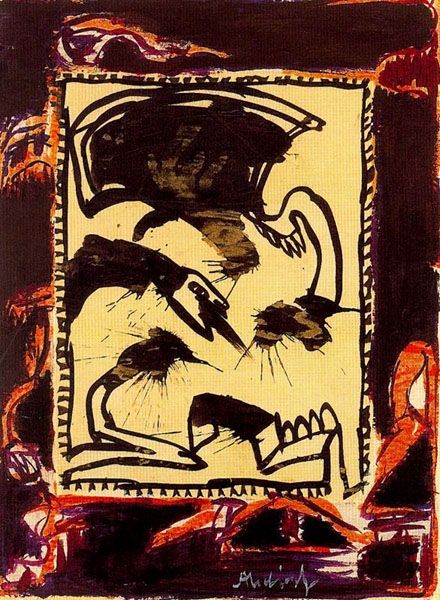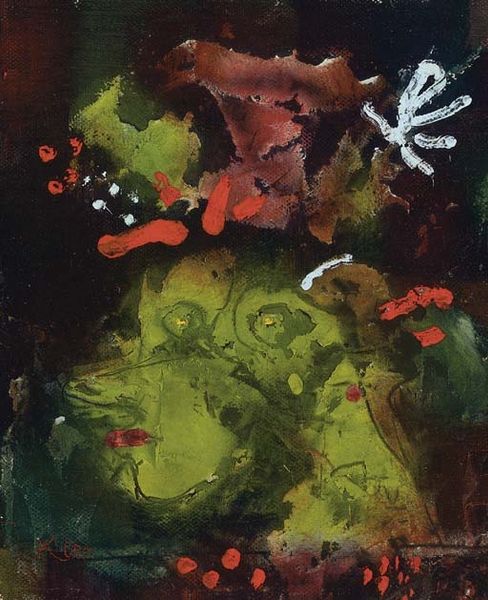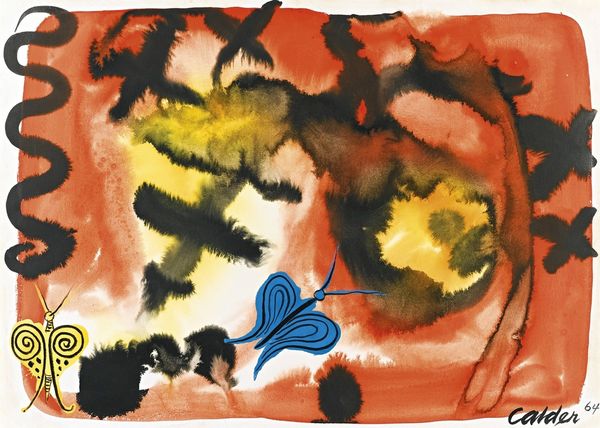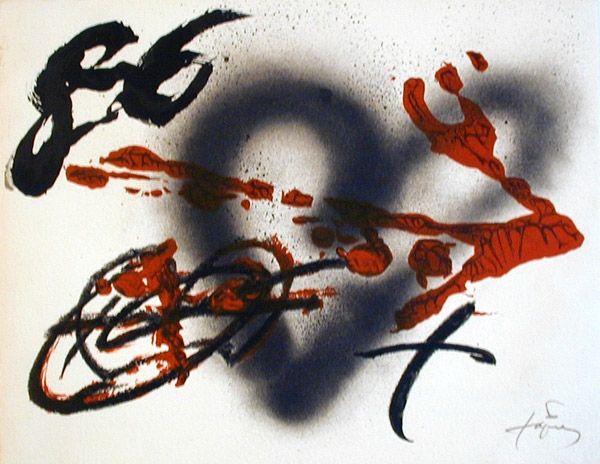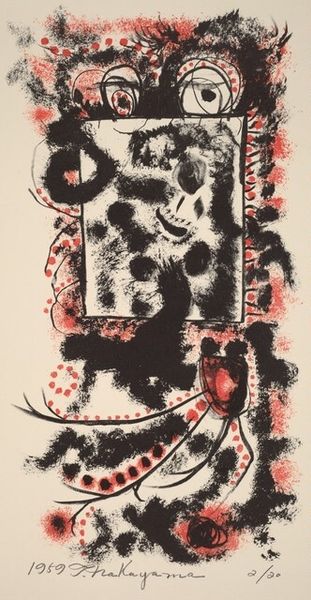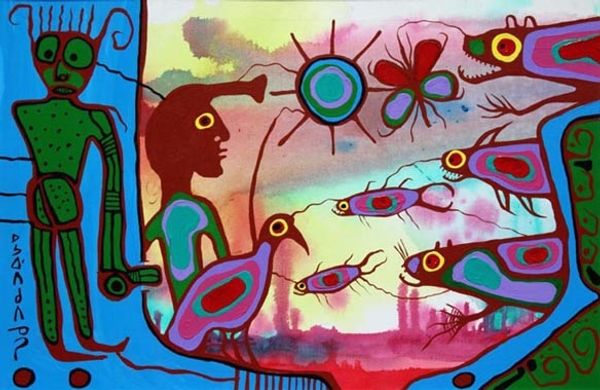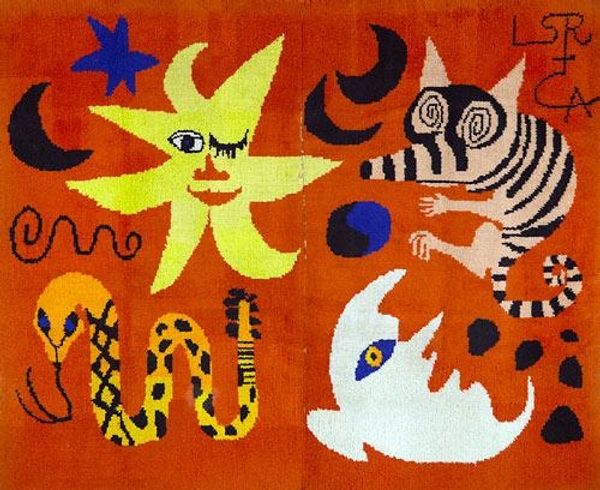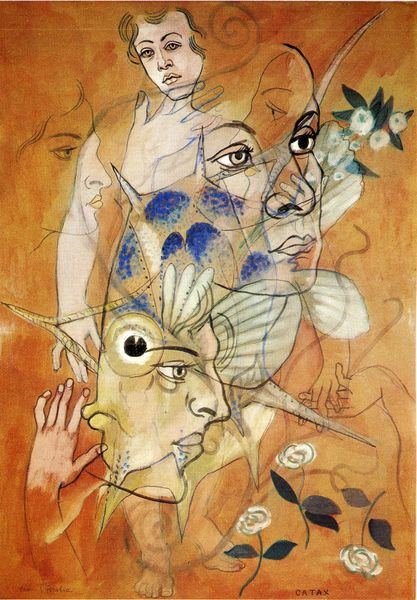
Copyright: Joan Ponc,Fair Use
Editor: This is "Suite Al-Lucinacions III" by Joan Ponç, created in 1947 using mixed media including watercolor. It's… chaotic. A real jumble of figures and shapes, with a stark contrast between the delicate watercolor and the intense imagery. What do you see in this piece? Curator: The chaos you describe is precisely where its power lies. Looking at Ponç's work through the lens of post-war Spain, we see an artist grappling with trauma and repression under the Franco regime. His engagement with Surrealism wasn't merely stylistic. Instead, it was a radical act of challenging dominant ideologies. Those hallucinatory forms became a visual language for the unspeakable. Notice how figuration gives way to abstraction. Editor: So, the seemingly random imagery isn’t so random after all? How can you tell? Curator: Not at all. Think about Surrealism as a weapon, dissecting and reassembling reality to expose its inherent contradictions. What at first looks like randomness might in fact point toward deep social, political, and perhaps deeply personal unease and discontent. In a world where censorship reigns, distortion becomes truth, subversion a means for survival. Consider also the title itself. Does the concept of delusion as art play a role here? Editor: That makes me consider it very differently now. I guess I focused so much on the visual confusion that I missed the underlying message. I hadn't considered the specific political context. Curator: Precisely. The context transforms it. Instead of just seeing abstract shapes, we recognize a visual resistance, an artistic language coded in symbols and suggestive forms, defying easy interpretation but inviting constant questioning. What we are left with might very well be a testament to art's capability to voice dissent in the face of oppression. Editor: I hadn’t thought of surrealism as political resistance. Now, I see the painting not just as a composition, but as a complex cultural artifact. Curator: And that's the vital point. The piece serves as a reminder of the historical weight art can carry, acting as both a reflection and a forceful critique.
Comments
No comments
Be the first to comment and join the conversation on the ultimate creative platform.
